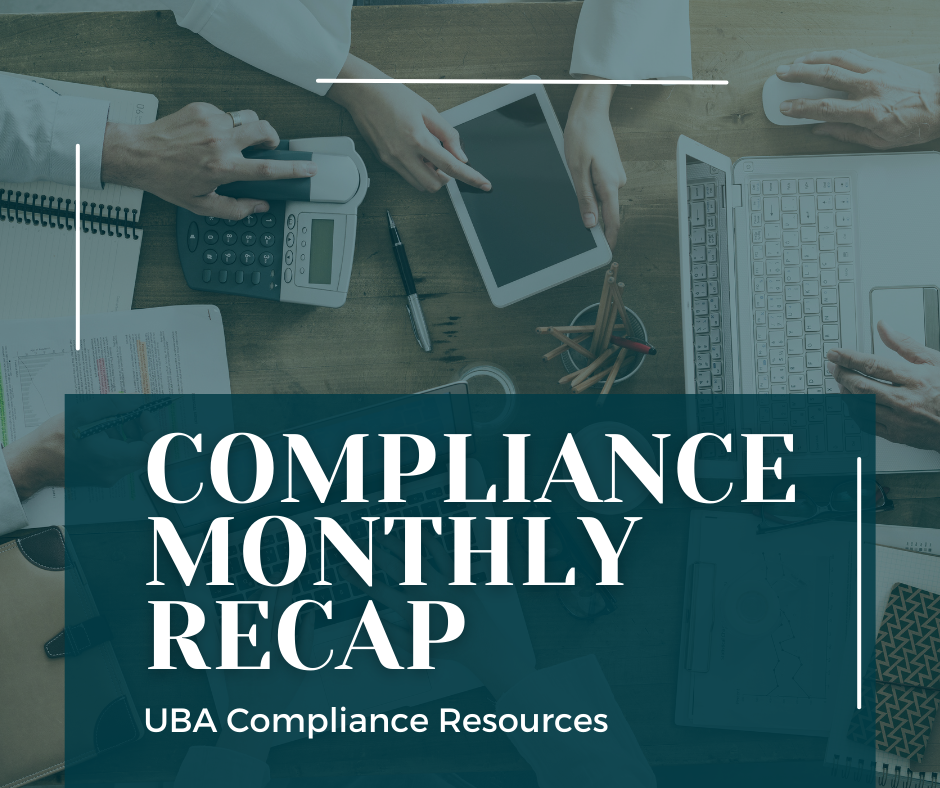Author: Cleveland Benefits Partners
-

Compliance Recap | November 2025
THE ANNUAL GAG CLAUSE ATTESTATION DUE DEC. 31, 2025 Under the rules adopted by Congress in the Consolidated Appropriations Act, 2021 (CAA), group health plans and health insurance issuers of both fully insured and self-funded plans must certify that their contracts with providers, networks, third-party administrators (TPAs), pharmacy benefit managers (PBMs), or other service providers…
-

Compliance Alert: HIPAA Privacy Notice Update Due Feb. 16, 2026
The U.S. Department of Health and Human Services (HHS) has issued a final rule that requires covered entities—including many health plans—to update their Notice of Privacy Practices (Privacy Notice). This change enhances privacy protections for highly sensitive Substance Use Disorder (SUD) treatment records. Why the Update is Necessary The HIPAA Privacy Rule already mandates that…
-

Healthy Through The Holidays: Your Winter Wellness Guide
The transition into winter and the busy holiday season often brings two things: cold weather and packed calendars. While the shorter days and festive cheer are welcome, they also present unique challenges to our health, including managing stress, fighting off seasonal illnesses, and maintaining an active routine. Staying healthy this winter isn’t about grand gestures;…
-

Meeting the ERISA Deadline: Handling MLR Rebates
Employers with insured health plans may have received a Medical Loss Ratio (MLR) rebate from their health insurance carrier this year. Rebates were required for plans not meeting the 2024 MLR standards and had to be issued by September 30, 2025, either as premium credits or lump-sum payments. If any part of the rebate qualifies…
-

The Power of Gratitude: A Guide to Well-Being
The phrase “attitude of gratitude” is more than a simple rhyme—it’s a powerful reminder to intentionally practice thankfulness in our daily lives. Consistently acknowledging what we appreciate not only enhances our own mental and physical health but also positively affects those around us. What Is Gratitude? Gratitude means being thankful and ready to show appreciation…
-

Compliance Recap | October 2025
2026 PENALTIES FOR FAILURE TO FILE OR FURNISH ACA REPORTING FORMS The IRS has announced the 2026 penalties for failure by Applicable Large Employers (ALEs) to file or furnish Affordable Care Act (ACA) reporting Forms 1095-C and 1094-C for the 2025 tax year. Amounts can increase significantly depending on how late the filing is or…
-

New Federal Guidance Expands Access to Fertility Benefits
Federal regulators—specifically, the Departments of Labor, Health and Human Services, and the Treasury—issued joint guidance on October 16, 2025, making it significantly easier for employers to offer fertility benefits outside of their traditional group health plans. This action was driven by an Executive Order focused on protecting in vitro fertilization (IVF) access and reducing the…
-

The Future of Benefits: Integrating Health for a Thriving Workforce
The future of healthcare is rapidly evolving, with a clear trend toward integrating health interventions directly into employee benefits packages. As employers face rising healthcare costs—projected to increase by over 8% in 2025—they are rethinking how to deliver value to their workforce while managing expenses. This integration is reshaping not just what benefits are offered, but how…
-

The Rising Cost of Prescription Drugs: Smart Ways to Save
No doubt about it, prescriptions are expensive. While this may not be a big worry when you’re young and healthy, the costs can add up quickly if you’re diagnosed with a chronic condition or need an expensive drug. Whether you take medications regularly or for an occasional illness, it pays to know how to save…
-

Compliance Risks in Open Enrollment: 5 Mistakes and How to Avoid Them
Open enrollment is a hectic and critical period for employers that often brings a risk of compliance errors. These mistakes can confuse employees and cause missed benefits, while also exposing employers to legal risks. This article highlights five common compliance pitfalls to avoid during open enrollment: By proactively addressing these areas, employers can help…
-

Breaking Barriers: Increasing Employee Utilization of Mental Health Benefits
Over the past several years, mental health in the United States has steadily declined. Growing concerns about this issue have increased the pressure on employers to provide stronger mental health benefits. Although many organizations have expanded their mental health offerings, utilization among employees remains low. When these resources go unused, employees who could benefit miss…
-

Empowering the Next Generation: Making Benefits “Easy” for Young Employees
Health Insurance today is significantly more complex for young workers than it was just a decade ago. This complexity is driven in large part by healthcare costs that have outpaced inflation, pushing premiums, copays, and other out-of-pocket expenses to comprise substantial portions of their budgets. For many younger employees, navigating this landscape is confusing –…
-

Compliance Recap | September 2025
UNDERSTANDING AND DISTRIBUTING MLR REBATES Insurance carriers must issue Medical Loss Ratio (MLR) rebates by September 30 when too much of the prior year’s premiums went to administrative costs or profit instead of claims and quality improvements. Employers who received MLR rebate checks will need to determine how much—if any—belongs to the plan and its…
-

Mastering Open Enrollment: A Step-by-Step Guide
Open enrollment doesn’t have to be a stressful administrative task. When planned well in advance, it becomes a valuable opportunity to review and enhance your benefits offerings, demonstrating your commitment to your team’s physical, mental, and financial well-being. A well-executed open enrollment can boost employee morale, improve retention, and ensure your workforce is supported. Use…
-

Compliance Recap | August 2025
NORTH CAROLINA PASSES NEW PBM LAW On July 10, 2025, North Carolina Governor Josh Stein signed into law the Act Supporting Community Retail Pharmacies and Improving Transparency (“the SCRIPT Act”). The sweeping law regulating pharmacy benefit managers (PBMs) in North Carolina is designed to improve transparency, strengthen consumer protections, and support community pharmacies. While most…
-

2026 Medical Cost Outlook
PwC’s latest annual analysis forecasts that group health insurance costs will increase by 8.5% in 2026—the third straight year at this elevated trend. This sustained rise means health care expenses are now similar to those seen 15 years ago, after a brief dip post-pandemic. Researchers gathered data from actuaries at 24 major U.S. health plans,…
-

Benefits 101: A Guide to PPO Plans
When navigating the world of health insurance, you will likely encounter the term PPO (Preferred Provider Organization). A PPO plan – whether medical or dental – is about balancing the cost and convenience of care. With a PPO plan, you get the flexibility to see a wide range of doctors. You’ll save money by staying…
-

What Brokers Should Be Doing Now to Get Clients ACA-Ready
How to position yourself as a trusted ACA compliance advisor For brokers and benefits advisors, Q4 planning doesn’t start in October. It starts now. September marks a critical moment in the annual ACA compliance cycle, when employers begin thinking about year-end strategies, benefits renewals, and how to avoid last-minute reporting panic. That makes now the perfect…
-

Navigating Your Health Plan: A Guide to Your Explanation of Benefits (EOB)
Ever found a confusing document in your mailbox after a doctor’s visit, wondering if it’s a bill, especially with an “amount you owe” at the bottom? You’re not alone! That document is most likely an Explanation of Benefits (EOB) from your health insurance company. It’s crucial to remember: an EOB is NOT a bill. Think…
-

Compliance Recap July 2025
THE ONE BIG BEAUTIFUL BILL ACT IMPACT ON EMPLOYEE BENEFITS The One Big Beautiful Bill Act of 2025 (OBBBA) introduces permanent changes to a range of employee benefits, creating a more stable and generous framework for employers and employees. HDHPs and HSAs Telehealth Services: High-deductible health plans (HDHPs) can now permanently cover telehealth before deductibles…
-

Health Insurance Terms You Should Know
Health care terms, medical bills, and forms can be hard to understand. Here are some common health care terms, and what they mean. Allowed Amount This is the maximum payment the plan will pay for a covered health care service. May also be called “eligible expense,” “payment allowance,” or “negotiated rate.” For example, if…